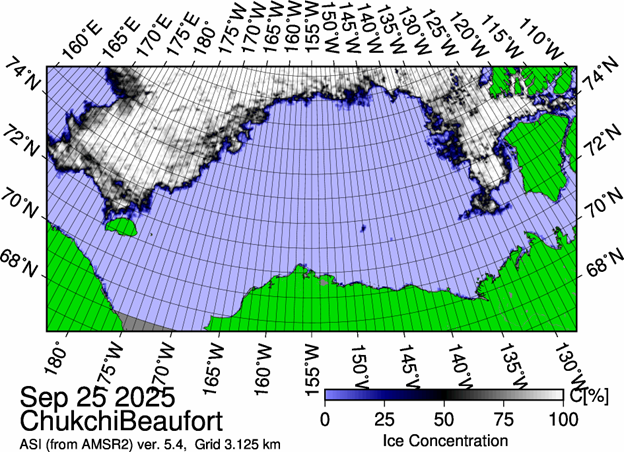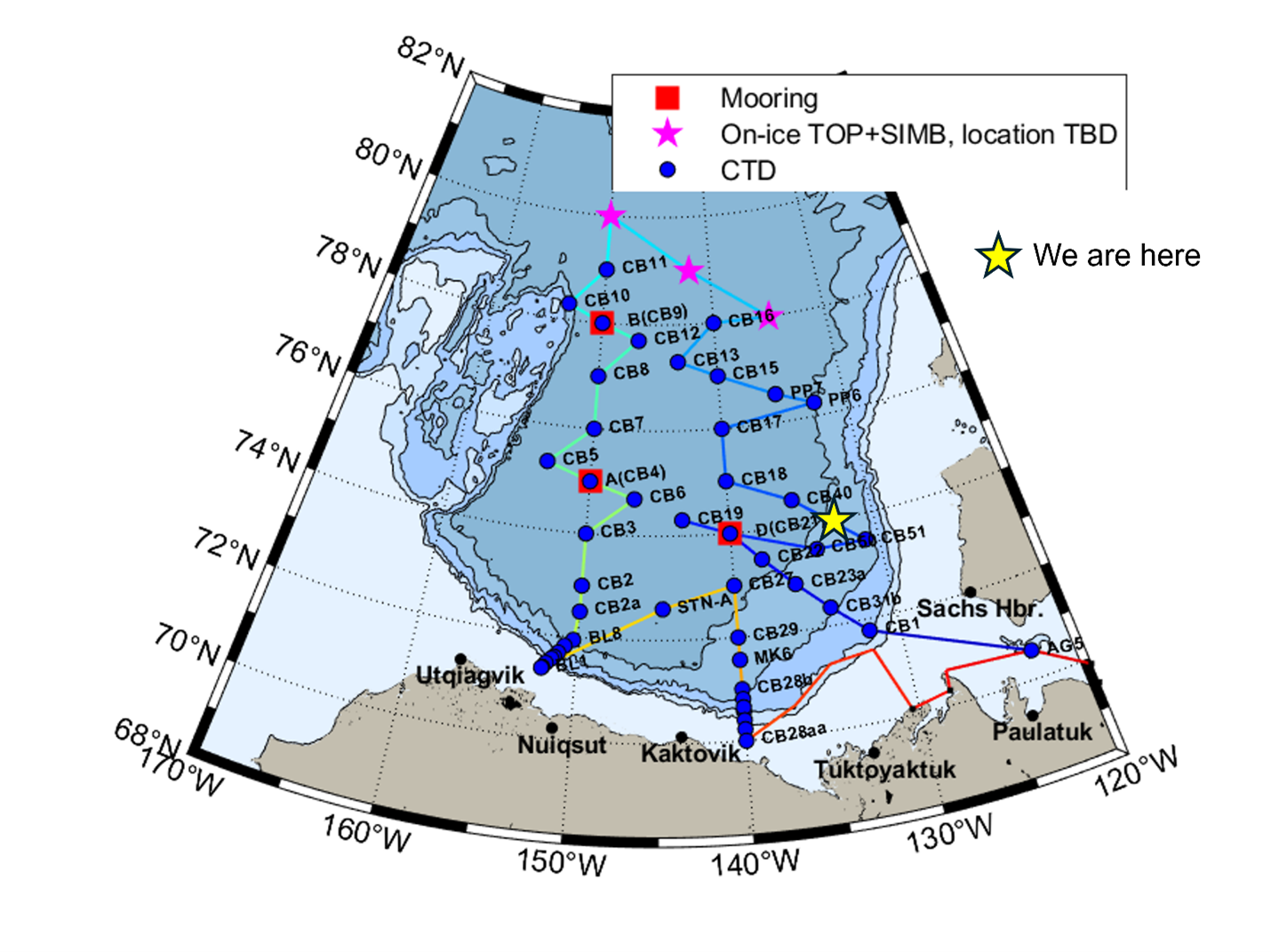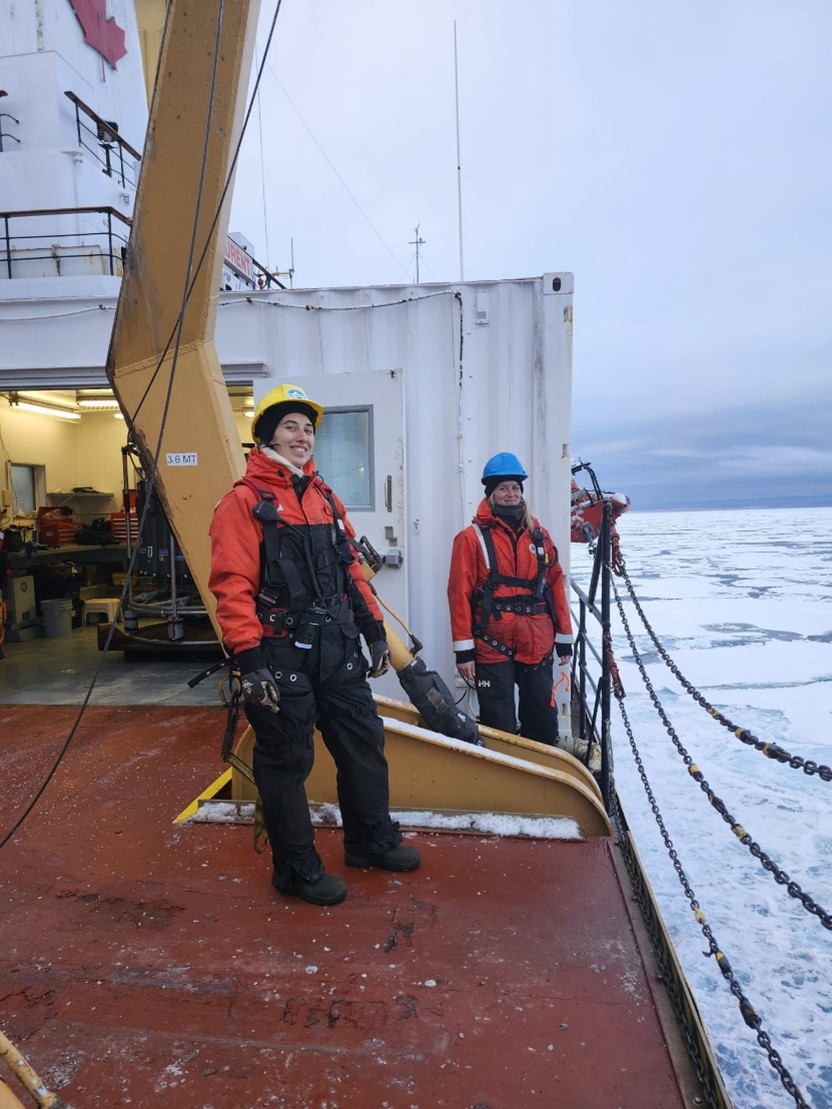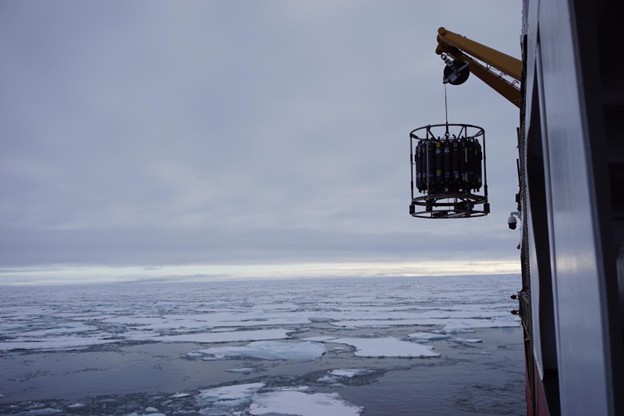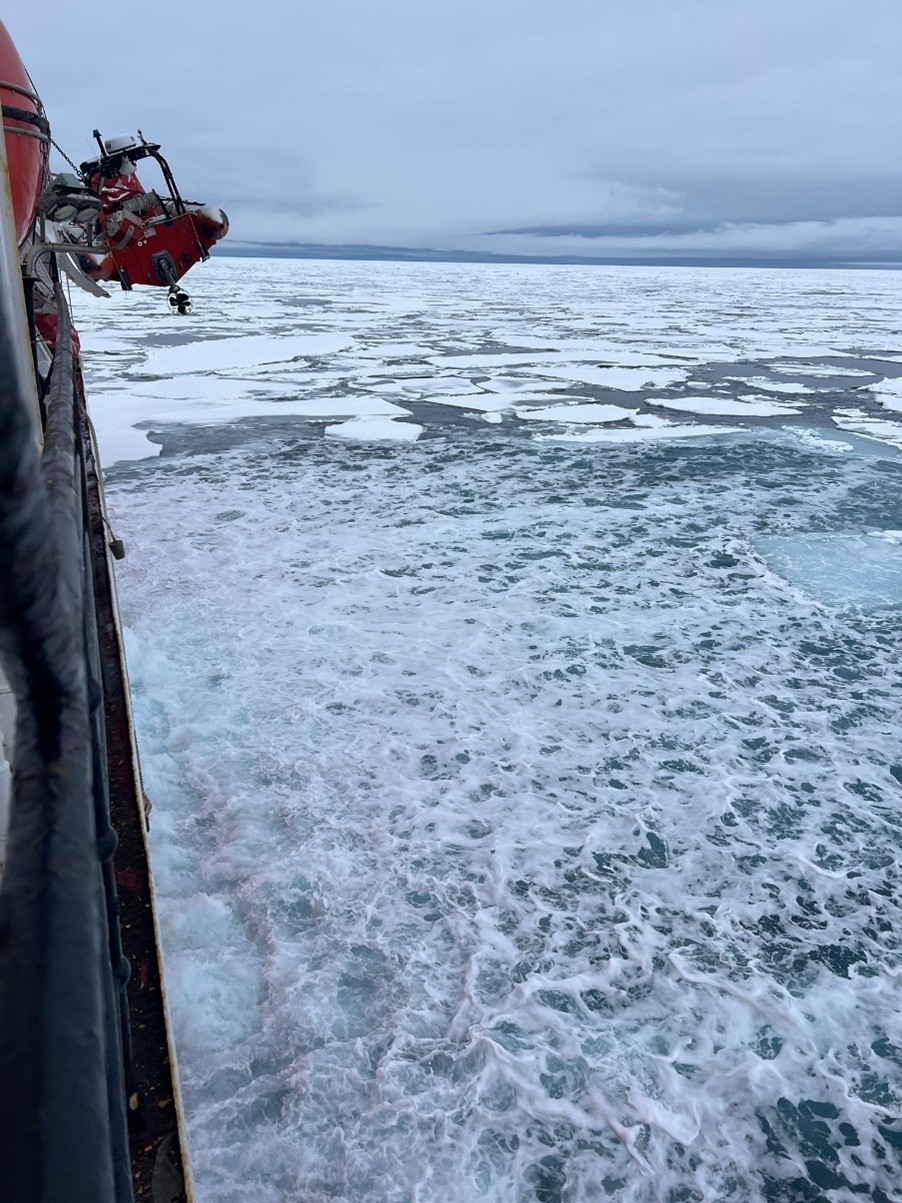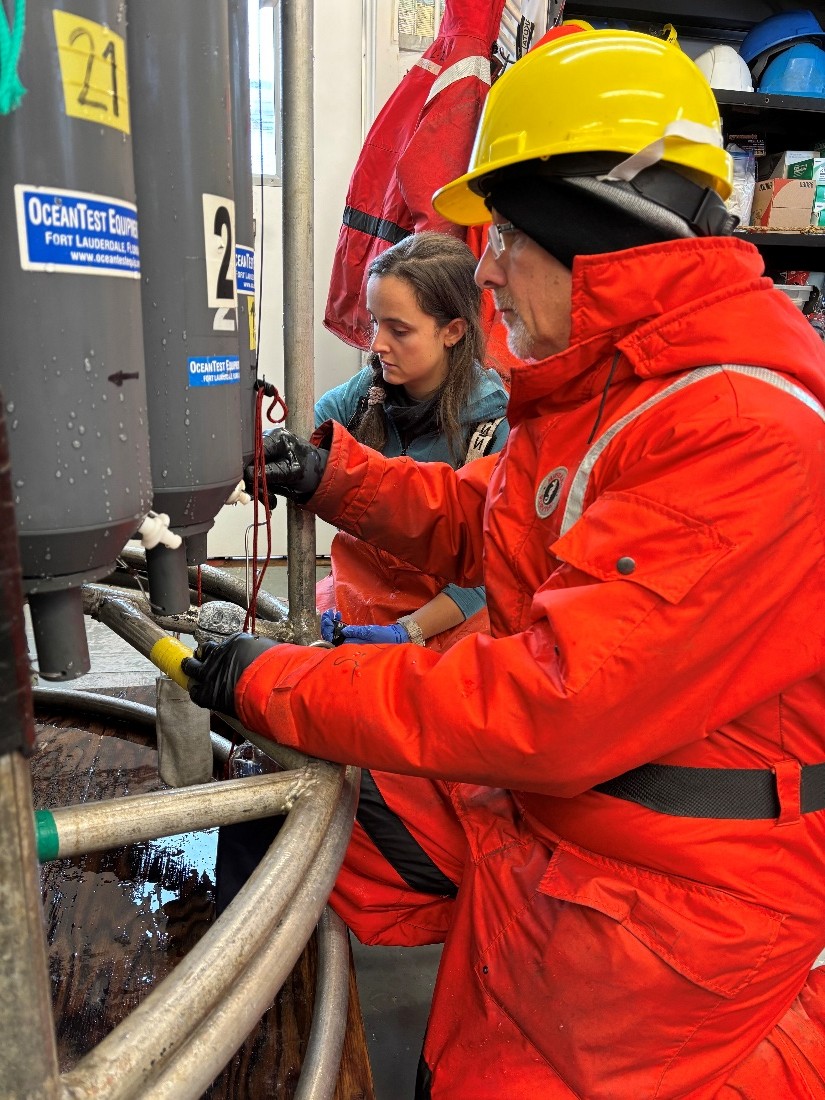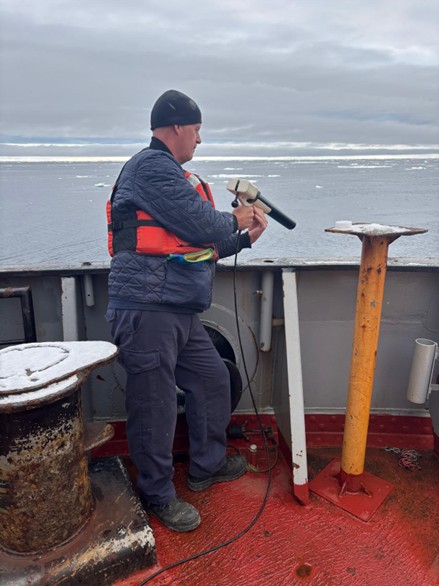Dispatch 9: Back in the ice
Jennifer Kosty (Yale University)
September 27, 2025
16:00 local, 73.37◦N, 131.33◦W
Conditions:
- Cloudy, flurries
- 70% sea ice cover
- -4.5◦C
- Sunrise: 27-Sept-2025 08:50
- Sunset: 27-Sept-2025 20:20
- Day length: 11 hours, 30 minutes
Today, we woke up back in the ice! We arrived at CB-51 around 10 am, and the night watch kicked off the station by collecting zooplankton samples off the fore deck. The samples collected here were the largest taken on the cruise so far, so we briefly paused the 11 am science meeting so that Marguerite Larriere could show us the specimens. We were excited to see a diverse collection of zooplankton, ranging in size from a few millimeters to centimeters, including at least one ctenaphore (or comb jelly). These creatures are iridescent, bioluminescent jellies that propel themselves forward using short hair-like structures, called cilia. The increased volume of the zooplankton collected here at CB-51 may be due to our location near the ice edge, which can be a more productive region.
The night watch then deployed the CTD rosette, and the day watch took over for its recovery and sampling. Overall, the cast went well, although the icy conditions made it a bit more challenging, since the watch had to carefully monitor the CTD wire to ensure that no large ice chunks collide with it. The crew assisted in this process by turning on the ship’s bubbler as needed to keep the area around the CTD wire ice-free.
Following the cast at CB-51, we started steaming west towards CB-40. During this transit, Takuji Waseda and crewmember Roger Carew deployed an xCTD sensor, which is an expendable unit that is launched off the stern of the ship and collects a depth profile of temperature and salinity in the upper 1000 m of the water column. These sensors are deployed approximately every 30 nautical miles between CTD stations to increase the horizontal resolution of the data.
We will arrive at CB-40 this evening and anticipate completing stations CB-18 and CB-17 tomorrow. In the meantime, we are keeping our eyes peeled for any wildlife sightings, especially now that we have re-entered the ice!
